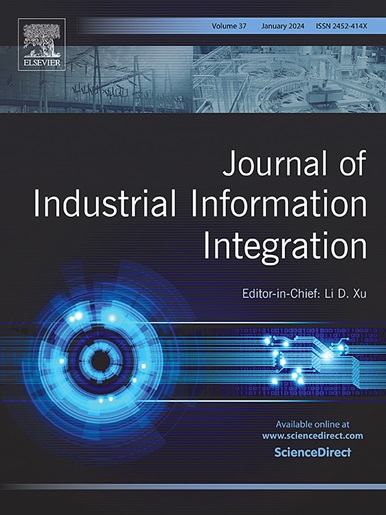激光冲击强化声发射残余应力监测的可解释深度学习框架
IF 10.4
1区 计算机科学
Q1 COMPUTER SCIENCE, INTERDISCIPLINARY APPLICATIONS
引用次数: 0
摘要
在智能制造领域,利用声发射(AE)技术对激光制造过程中的质量监测和保证至关重要。尽管如此,目前的监测技术很难准确地表征声发射信号的时频分布和瞬态动力学,并且缺乏针对这些特定分析任务量身定制的神经网络模型。为了弥补这一差距,本文提出了一种前沿的监测方法,该方法将双微分卷积网络(BDCN)与频带再校准谱图(FBRS)集成在一起。首先,提出了一种利用FBRS对瞬态声发射信号进行分析的新方法,该方法可以自适应地重新分配频率分辨率,从而在受限的像素空间内突出显示信息分量。BDCN是一种开创性的非线性网络模型,通过结合两个专门为水平和垂直差分设计的功能模块,共同进行定向特征处理和应力状态分类。该模型强调方向纹理和梯度模式,同时通过互补增强策略减轻低频特征损失。通过对7075铝合金和TC4钛合金的严格测试,实证证实了所提出方法的有效性。当与最先进的网络并置于一起时,所提出的监测策略显示出更高的判别精度和鲁棒性,表明其在智能制造质量保证领域的潜力。本文章由计算机程序翻译,如有差异,请以英文原文为准。
Explainable deep learning framework for residual stress monitoring in laser shock peening via acoustic emission
In the field of intelligent manufacturing, leveraging acoustic emission (AE) technology for quality monitoring and assurance during laser manufacturing processes is paramount. Despite this, current monitoring techniques struggle to accurately characterize the time-frequency distribution and transient dynamics of AE signals, and there exists a paucity of neural network models tailored for these specific analytical tasks. To bridge this gap, this paper presents a cutting-edge monitoring approach that integrates a Bi-Differential Convolutional Network (BDCN) with a Frequency Bands Recalibration Spectrogram (FBRS). Firstly, a novel analytical technique employing FBRS for transient AE signals is introduced, which adaptively redistributes frequency resolution to highlight informative components within a constrained pixel space. The BDCN, a groundbreaking nonlinear network model, jointly performs directional feature processing and stress state classification by incorporating two specialized functional modules designed for horizontal and vertical differencing. The model emphasizes directional texture and gradient patterns while mitigating low-frequency feature loss through complementary enhancement strategies. The efficacy of the proposed methodology has been empirically confirmed through rigorous testing on aluminum alloy 7075 and titanium alloy TC4. When juxtaposed with state-of-the-art networks, the presented monitoring strategy exhibits enhanced discriminative precision and robustness, signifying its potential in the domain of intelligent manufacturing quality assurance.
求助全文
通过发布文献求助,成功后即可免费获取论文全文。
去求助
来源期刊

Journal of Industrial Information Integration
Decision Sciences-Information Systems and Management
CiteScore
22.30
自引率
13.40%
发文量
100
期刊介绍:
The Journal of Industrial Information Integration focuses on the industry's transition towards industrial integration and informatization, covering not only hardware and software but also information integration. It serves as a platform for promoting advances in industrial information integration, addressing challenges, issues, and solutions in an interdisciplinary forum for researchers, practitioners, and policy makers.
The Journal of Industrial Information Integration welcomes papers on foundational, technical, and practical aspects of industrial information integration, emphasizing the complex and cross-disciplinary topics that arise in industrial integration. Techniques from mathematical science, computer science, computer engineering, electrical and electronic engineering, manufacturing engineering, and engineering management are crucial in this context.
 求助内容:
求助内容: 应助结果提醒方式:
应助结果提醒方式:


